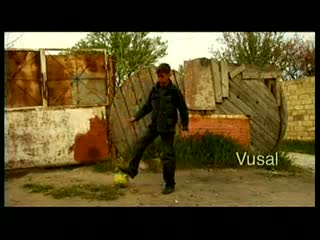Some 65,000 refugees from Azerbaijan gain Armenian citizenship
News Stories, 6 February 2004

YEREVAN, Feb. 6 (UNHCR) – In one of the largest naturalizations of refugees in recent decades, the number of refugees from Azerbaijan obtaining Armenian citizenship topped 65,000 by the end of January, 2004, the UN refugee agency reported today.
The naturalized refugees were among the 360,000 ethnic Armenians who arrived in Armenia from Azerbaijan from 1988 to 1993 as a result of the conflict over the disputed territory of Nagorno-Karabakh. With no resolution in sight for the Nagorno-Karabakh situation, the government and UNHCR have focused on helping refugees integrate locally in Armenia. Naturalization became an option for the refugees in 1995 with the enactment of a citizenship law which included special provisions to make naturalization much easier for refugees from Azerbaijan. UNHCR supported the process with financial and material assistance to regional government offices to help with administration and paperwork.
At first, relatively low numbers of refugees came forward, in part due to a lack of awareness of the right to naturalize and of the necessary procedures. Over the first four years of the programme, a total of 7,400 naturalized. In 1999, UNHCR began an information campaign in conjunction with the government to better inform refugees of this option. In part thanks to this campaign, the numbers shot upwards, with nearly 8,000 naturalizing in 1999 alone. Another incentive for naturalization came after July 2000, as former Soviet passports could no longer be used for travel outside of Armenia. Citizenship allows refugees to obtain an Armenian passport. The numbers nearly doubled in 2000 with more than 15,600 naturalizations, followed by another 16,300 in 2001. More than 17,400 others naturalized over the next two years, and the more than 300 new citizens in January, 2004 pushed the total to over 65,000 since 1995.
Besides access to an Armenian passport, naturalization brings a number of additional rights to the refugees, including the right to vote in national elections and the right to own land. However, even without naturalizing, refugees in Armenia have extensive legal rights nearly on par with citizens.
In Armenia, naturalization is an individual and voluntary choice. Refugees have to pro-actively request naturalization, rather than receiving it automatically or as a group. Some factors that have inhibited refugees from naturalizing are fear of losing refugee assistance and benefits, including compensation for their losses in Azerbaijan in the event of a peace agreement, and worries about compulsory military service for young men of draft age. Some refugees point out that naturalization itself does not directly improve their living conditions, which is a more pressing concern for refugees who are among the poorest of the poor in Armenia. Yet despite these concerns, the number of naturalized refugees has grown steadily.
"Our main goal is to make sure that refugees have access to a fair and effective naturalization process and can make a free and informed decision about naturalization. It is not just about the quantity of naturalizations, but the quality of the process as well," said Lloyd Dakin, UNHCR's representative in Armenia. "However, while we do not measure success in Armenia solely by the numbers who naturalize, the extent of naturalization in Armenia is impressive and shows that the process is working well."
The Armenian voluntary naturalization is among the largest ever for a specific refugee group. In the past decade, over 8,000 Guatemalans have naturalized in Mexico, and in 1980, 36,000 Rwandan refugees voluntarily acquired Tanzanian citizenship. In industrialized countries, people granted asylum often have the right to naturalize after a number of years. However, as governmental statistics do not generally reflect whether someone naturalizing originally entered the country as a refugee or gained asylum, it is difficult to gauge the extent of refugee naturalizations in industrialized nations.
"Naturalization and local integration are not very often available as a durable solution for refugees worldwide," concluded Dakin. "But in Armenia it has been happening on a large scale for some time. This is an impressive achievement reflecting the government's generosity towards refugees, and it deserves recognition."



























































